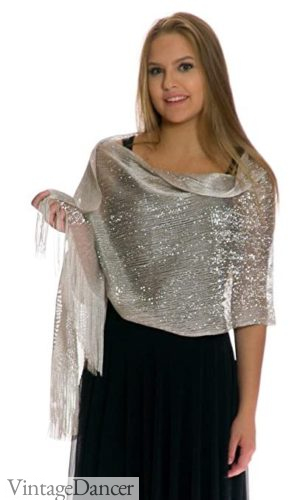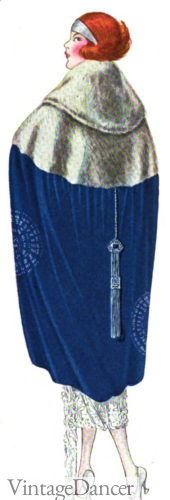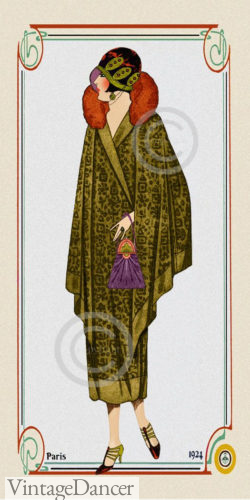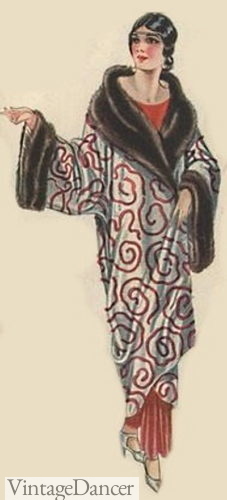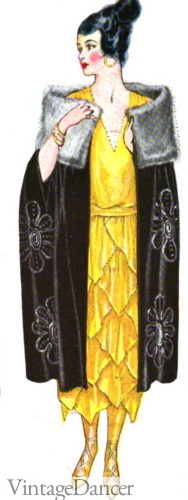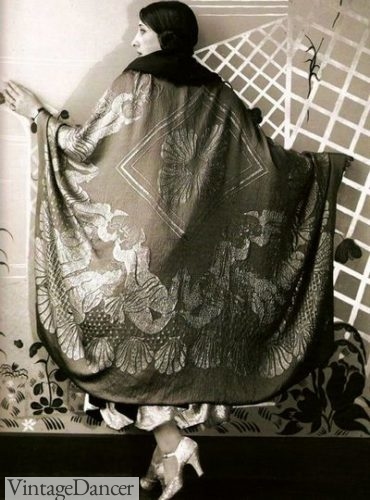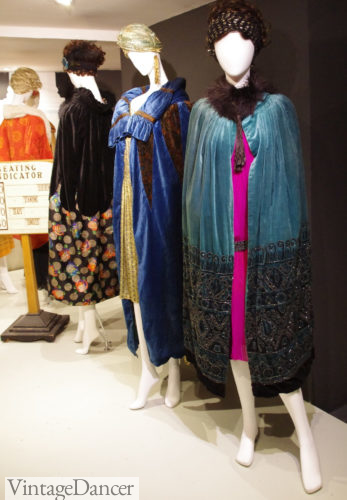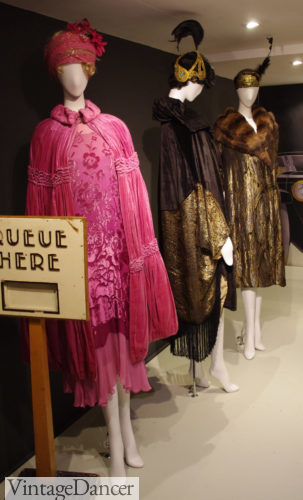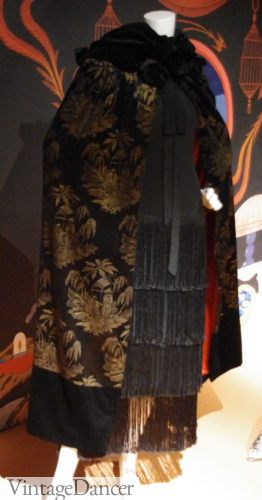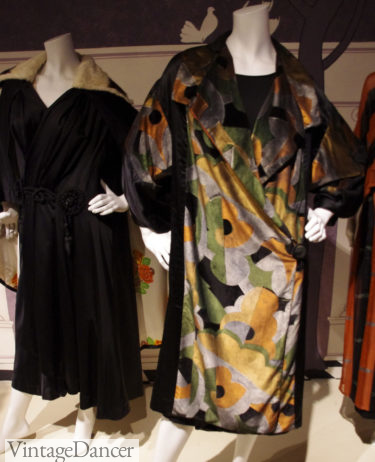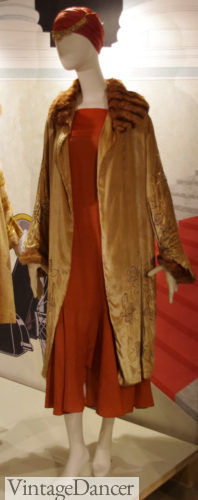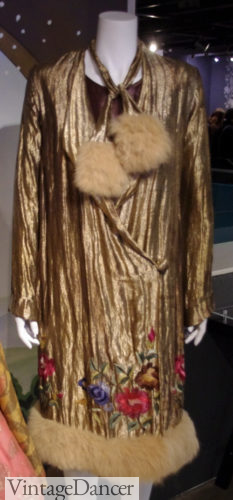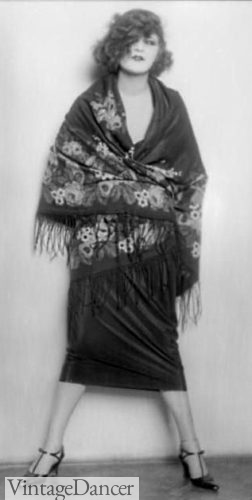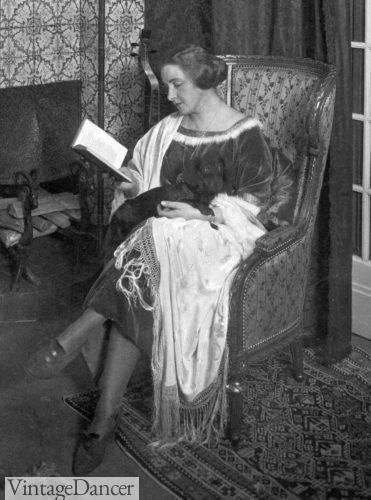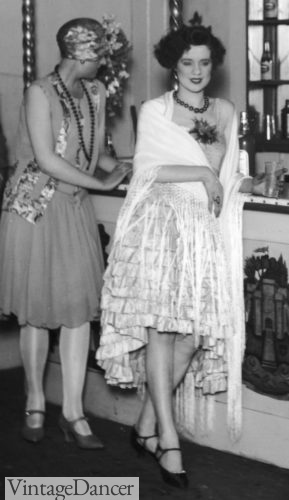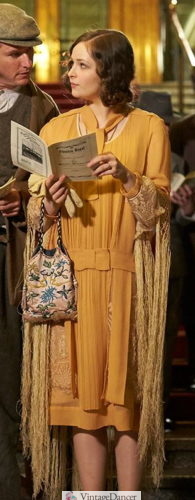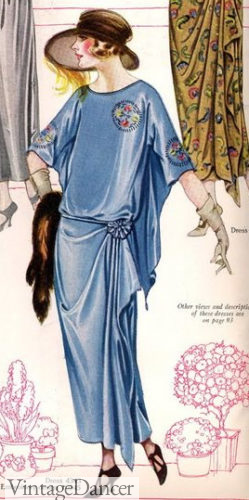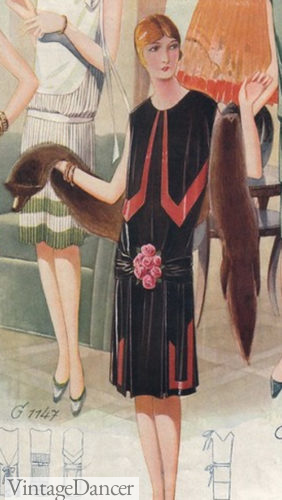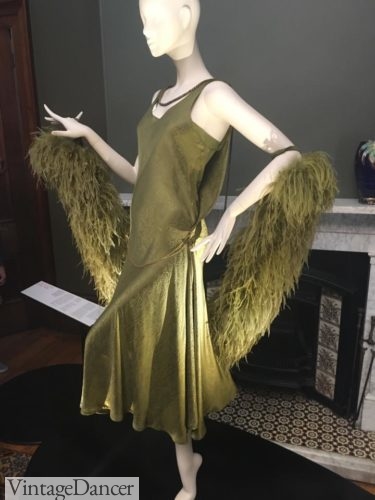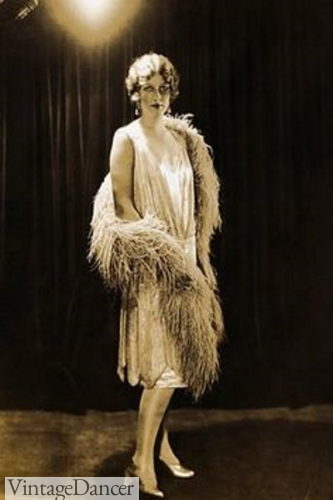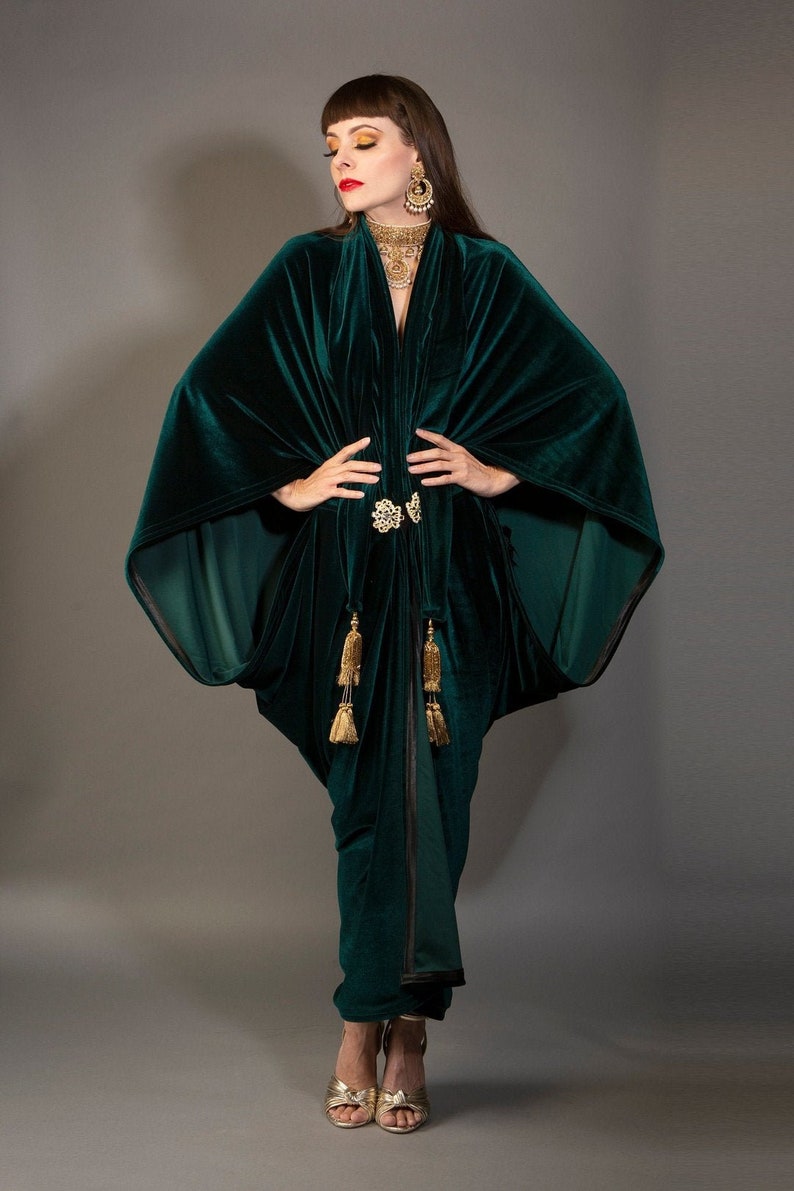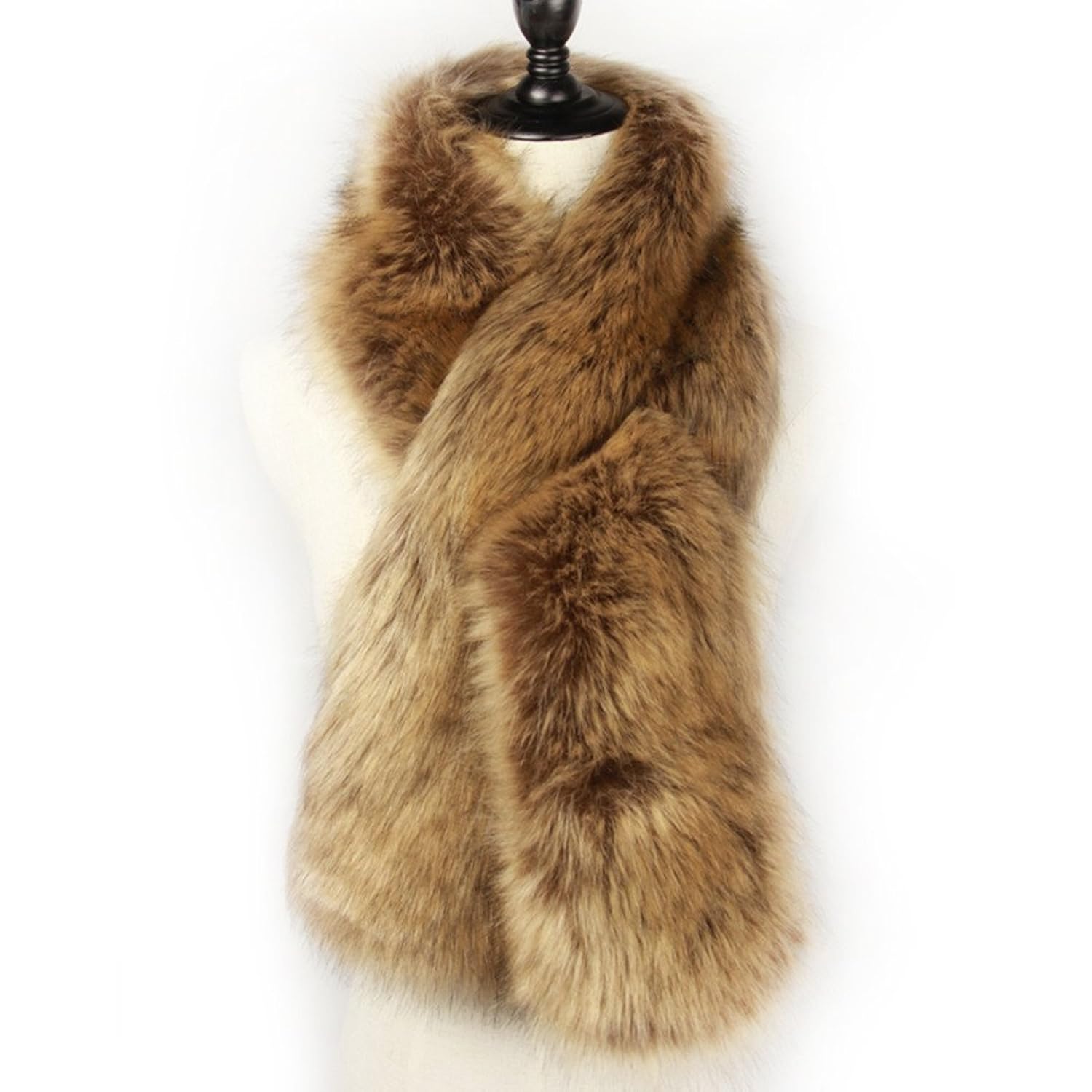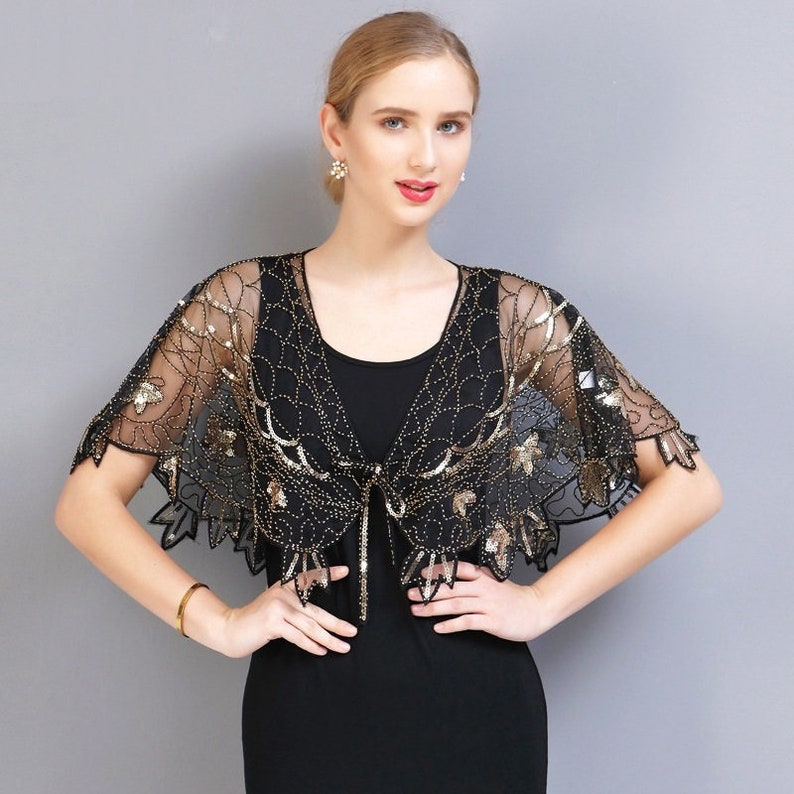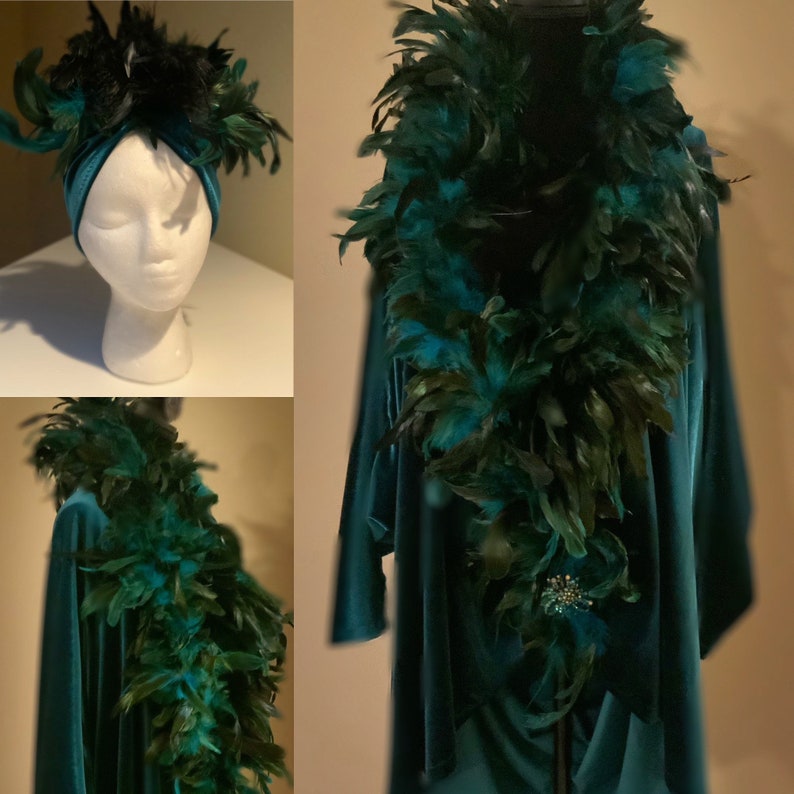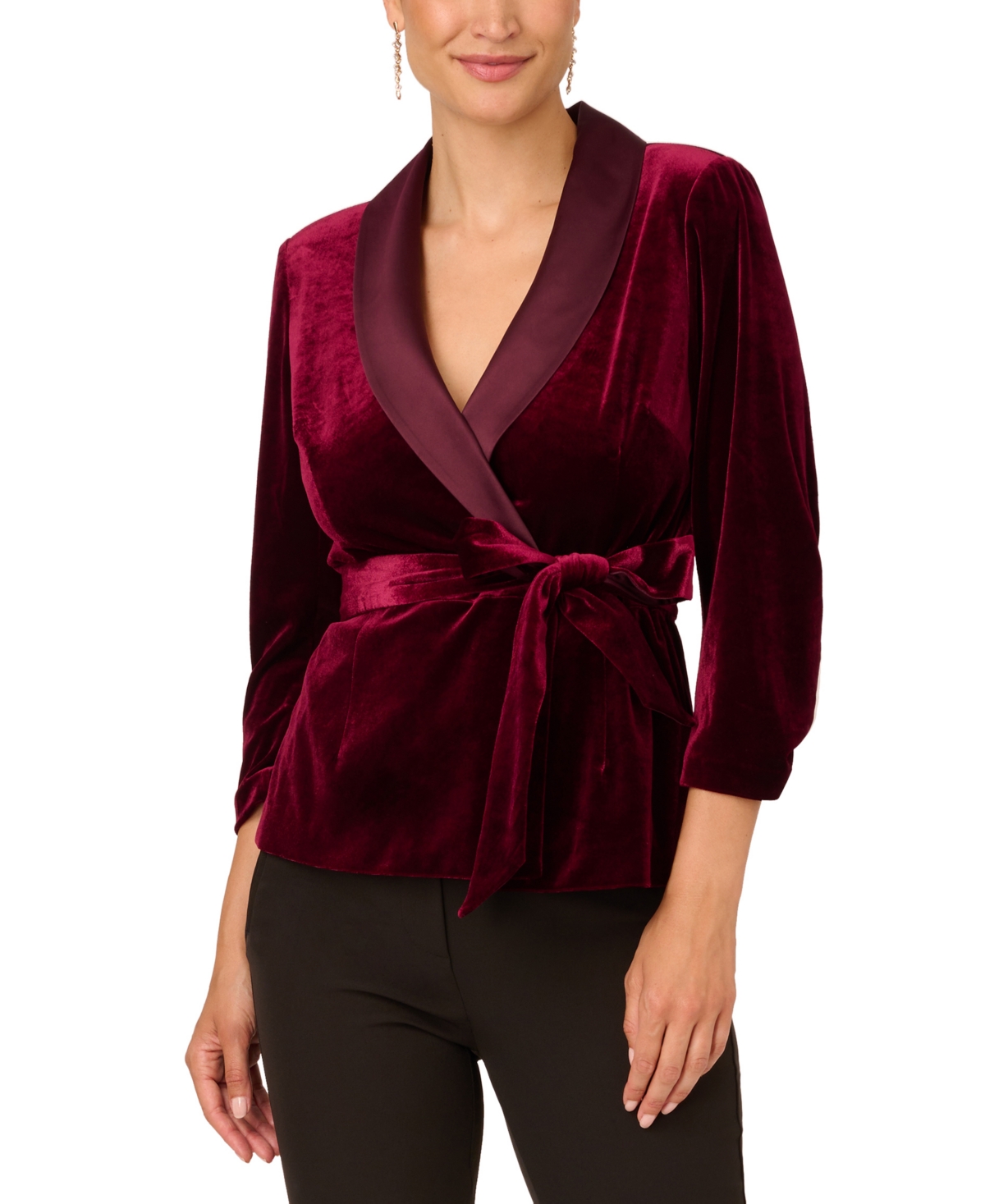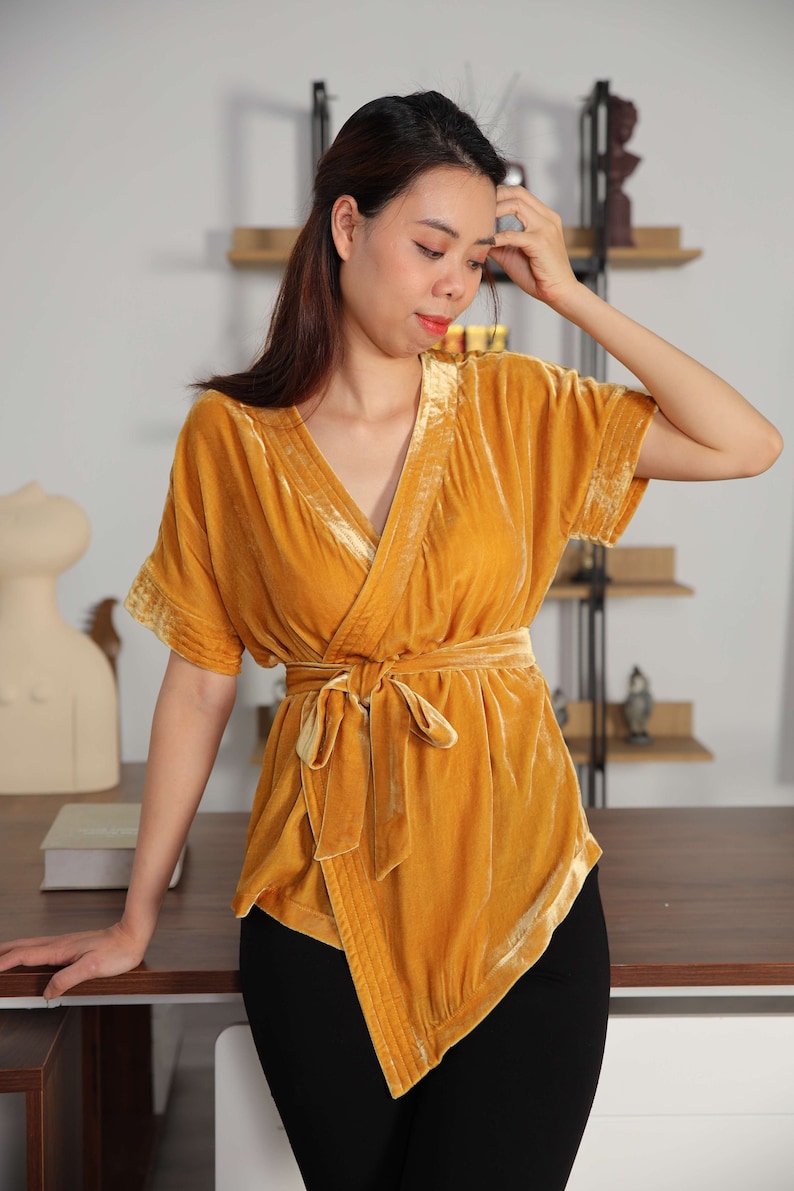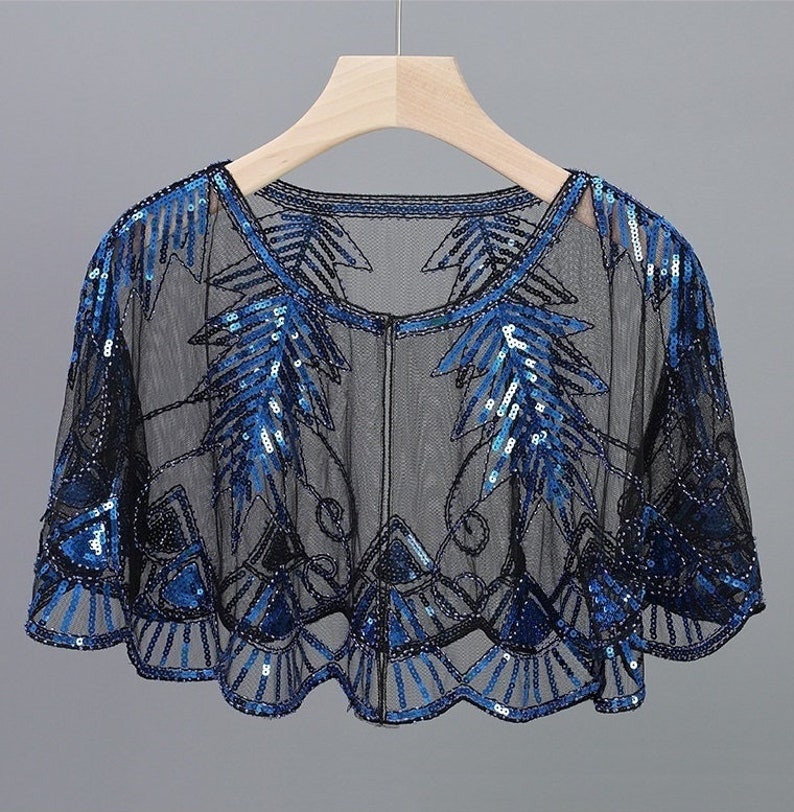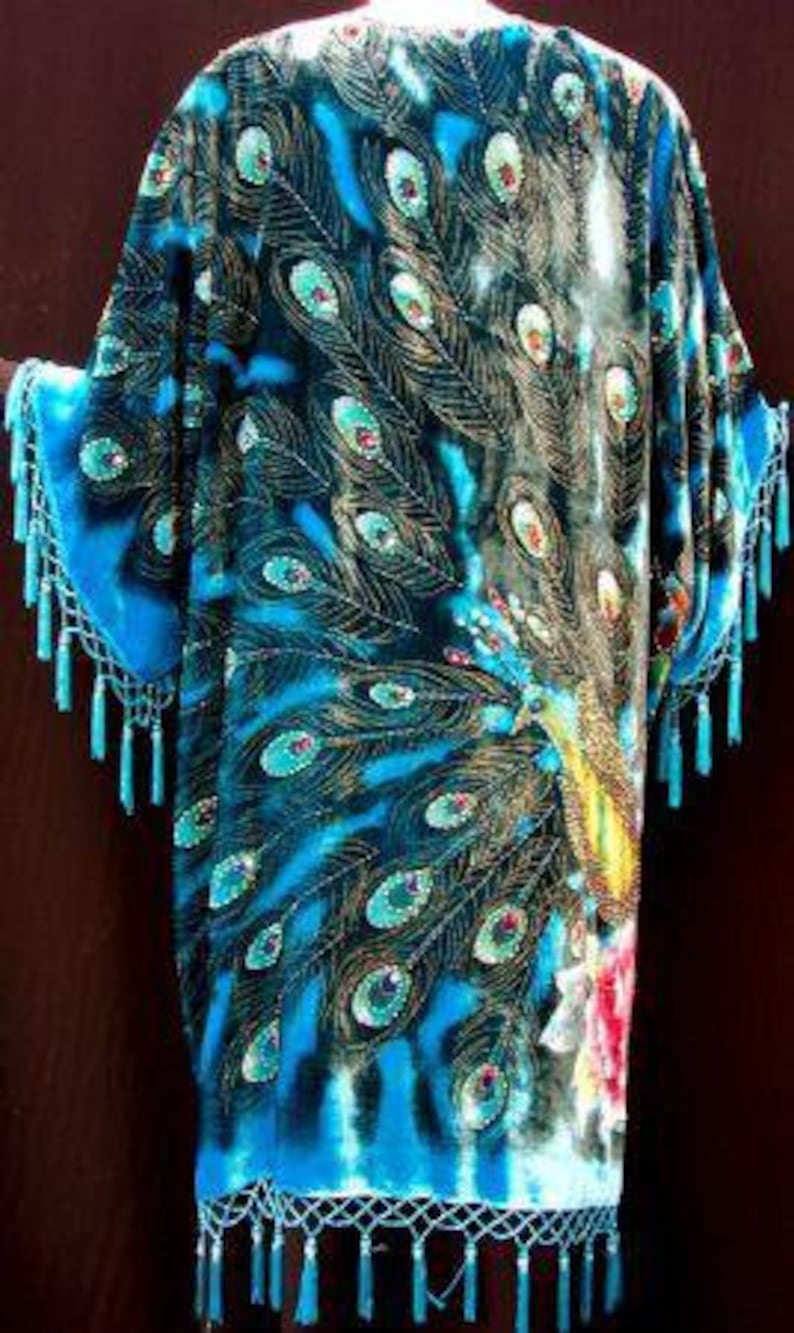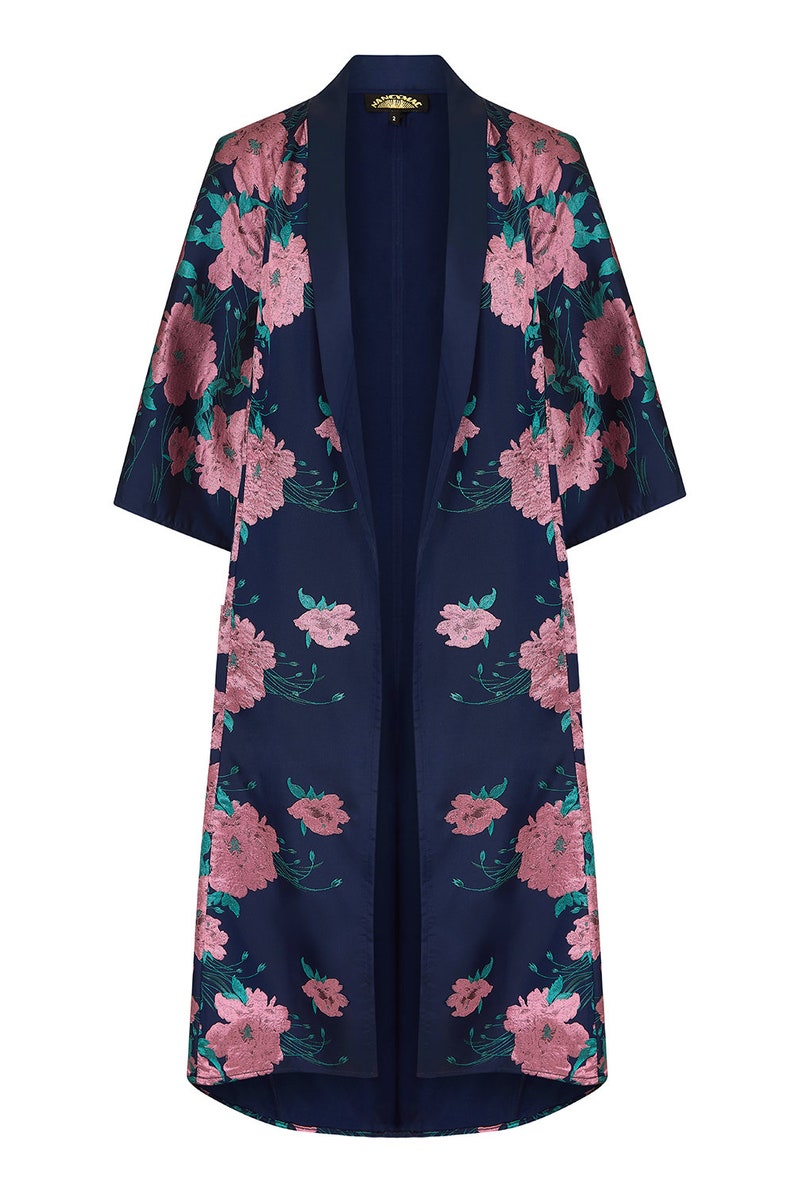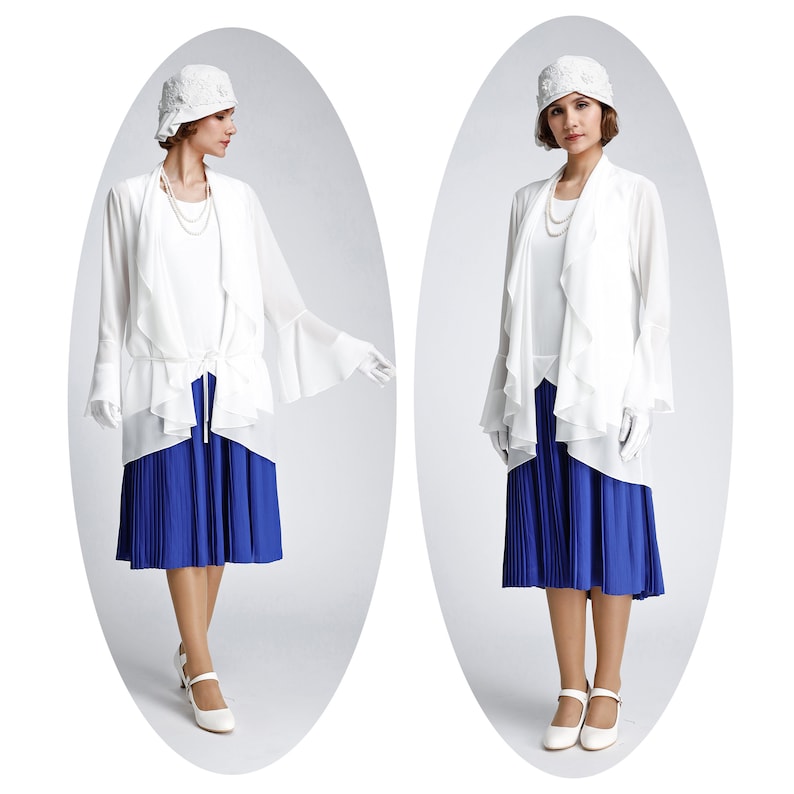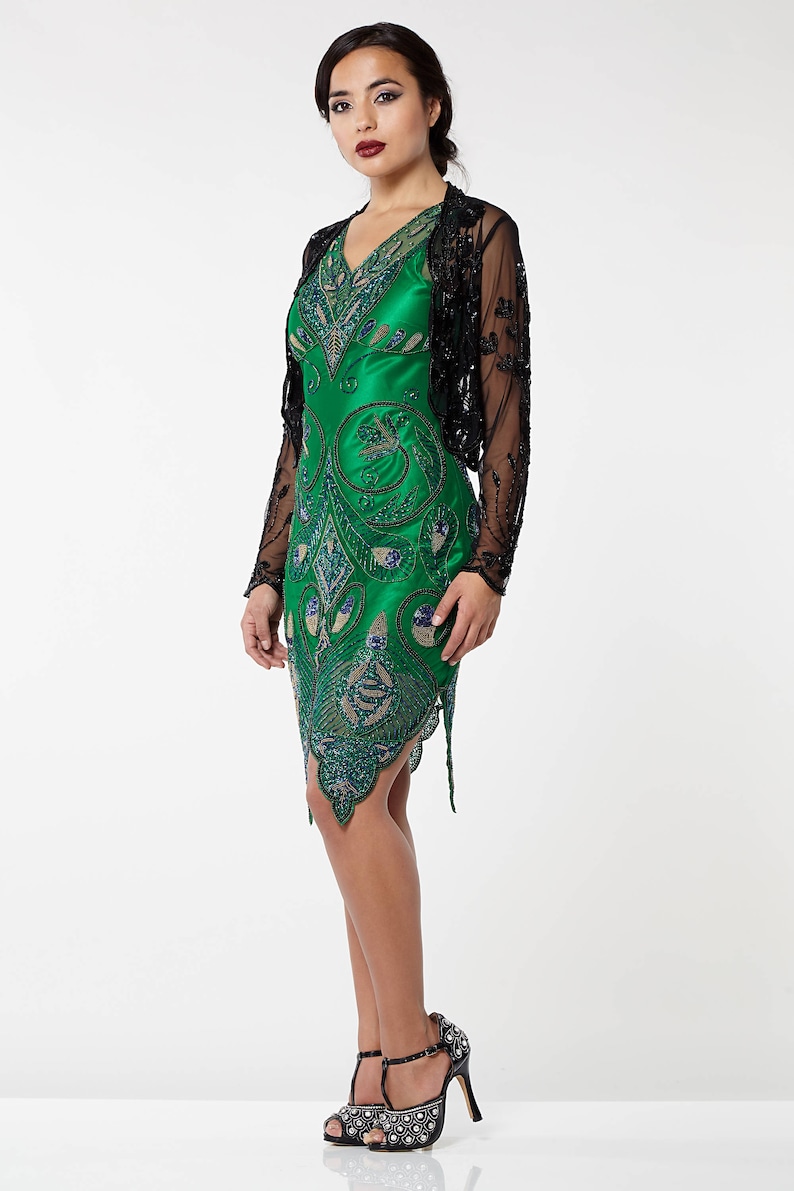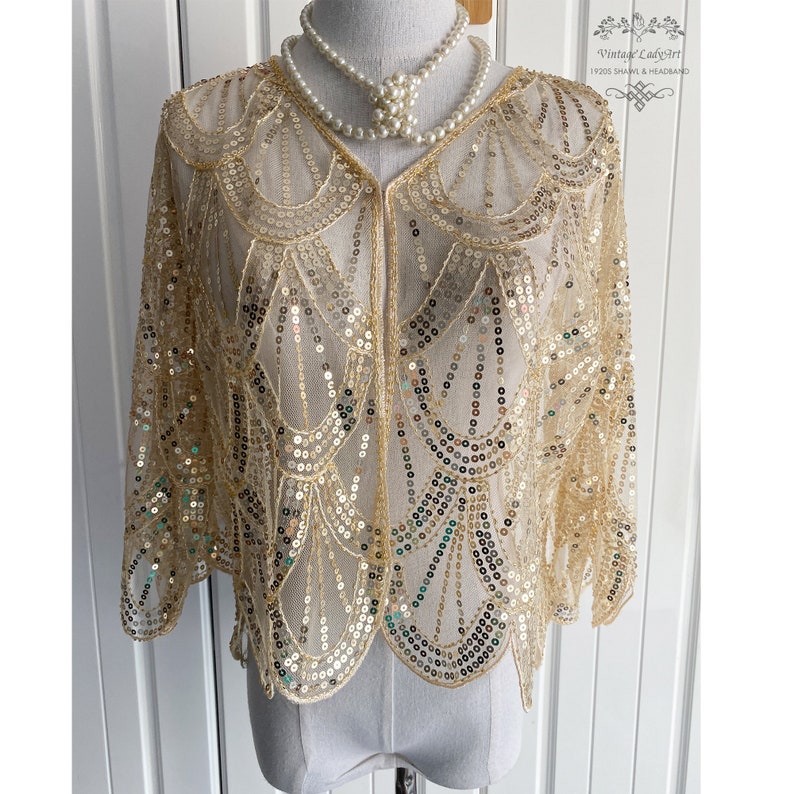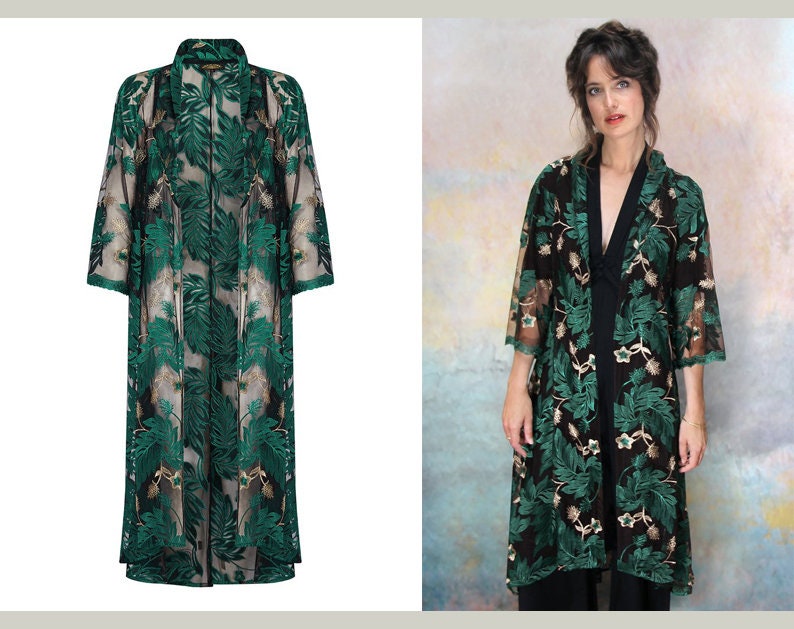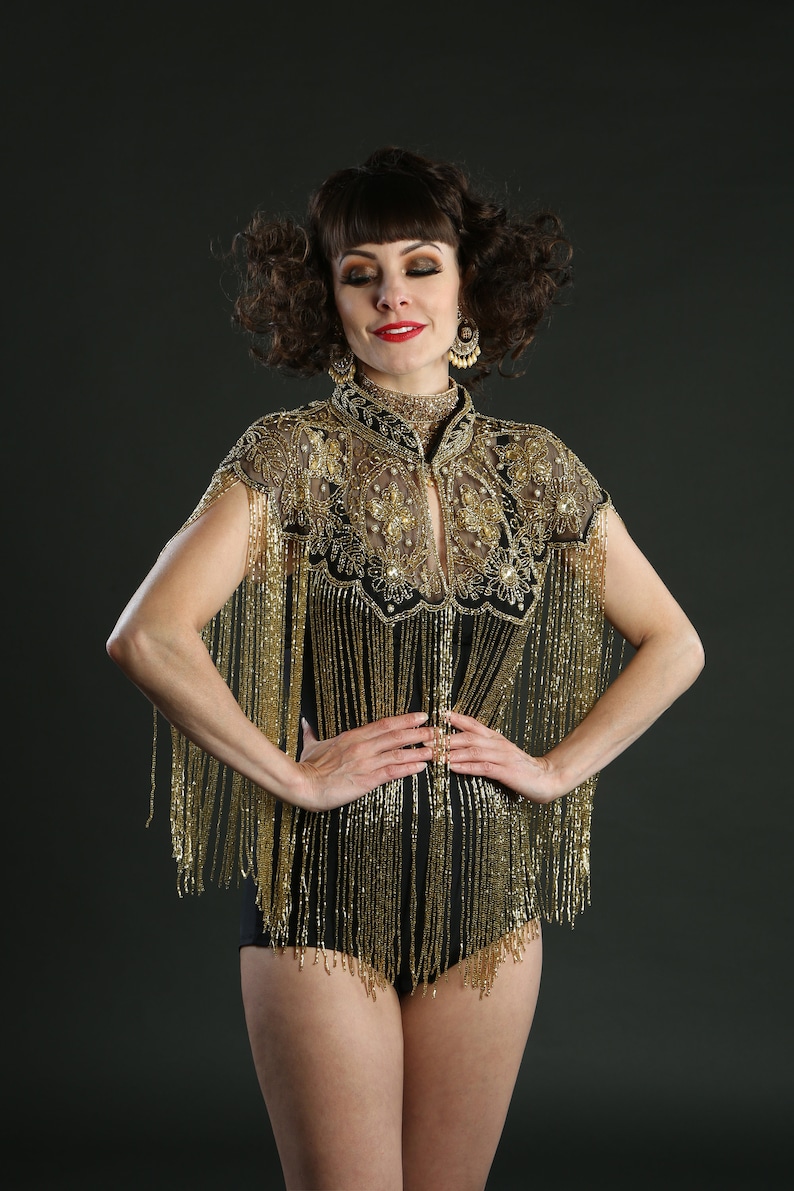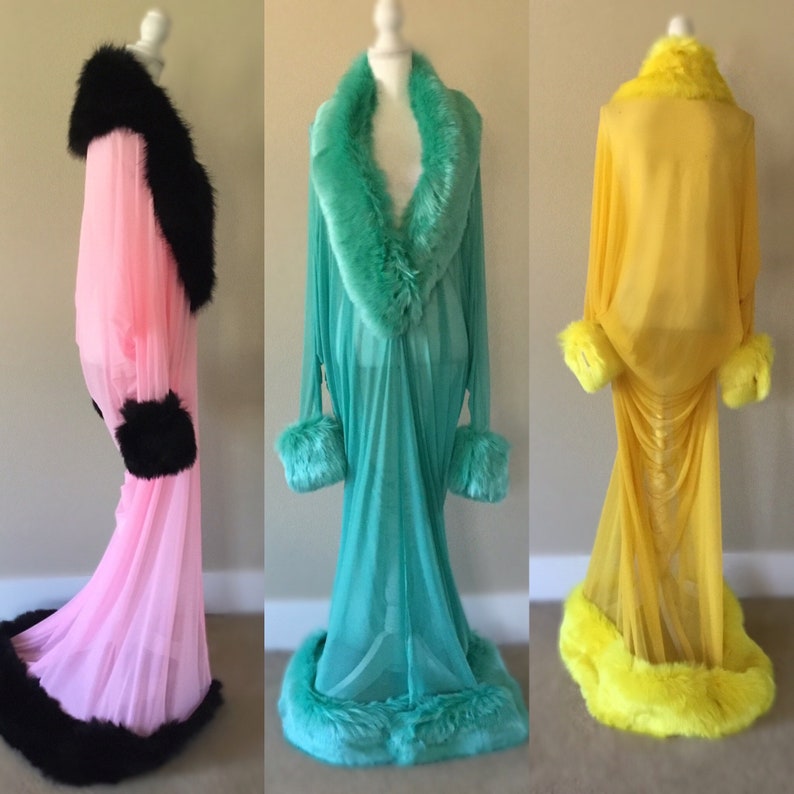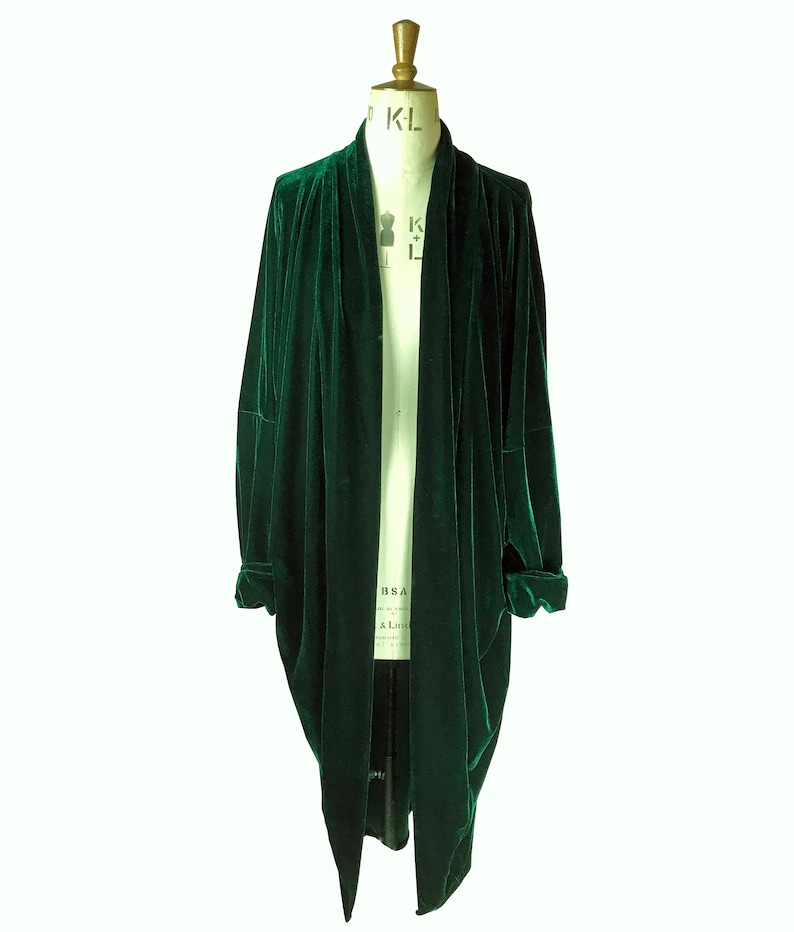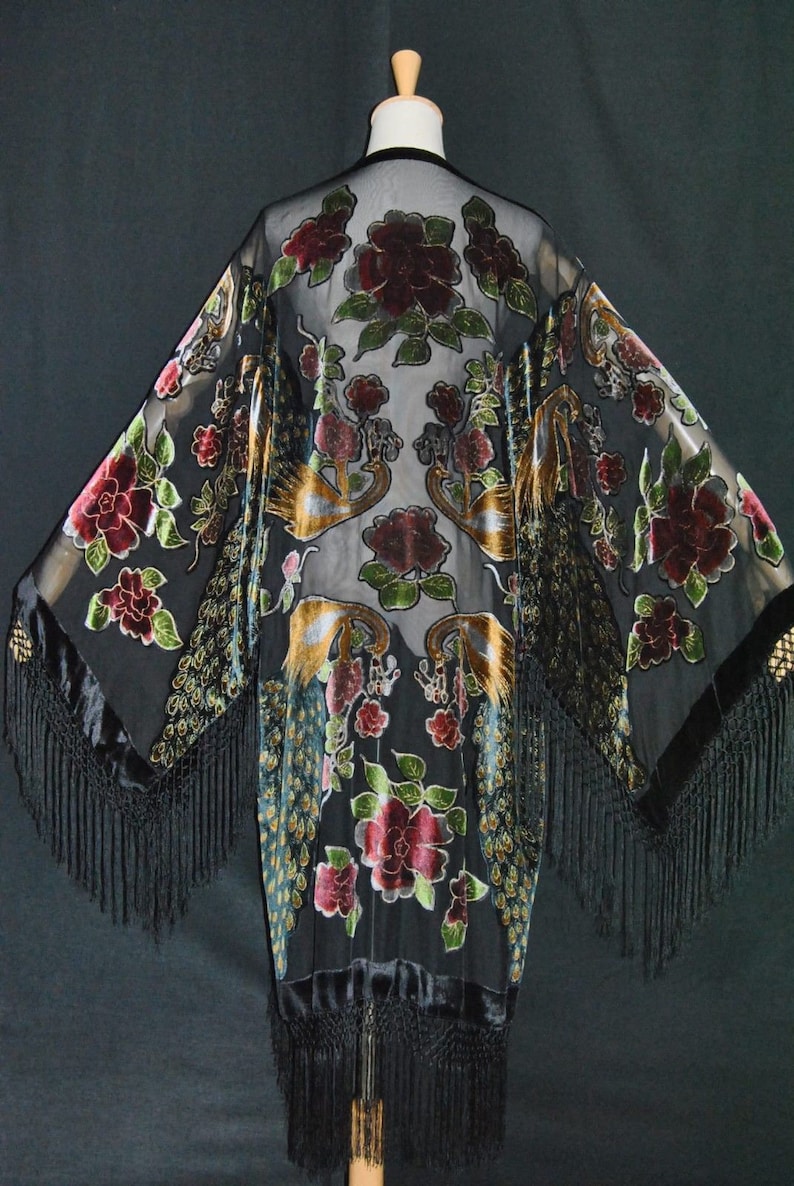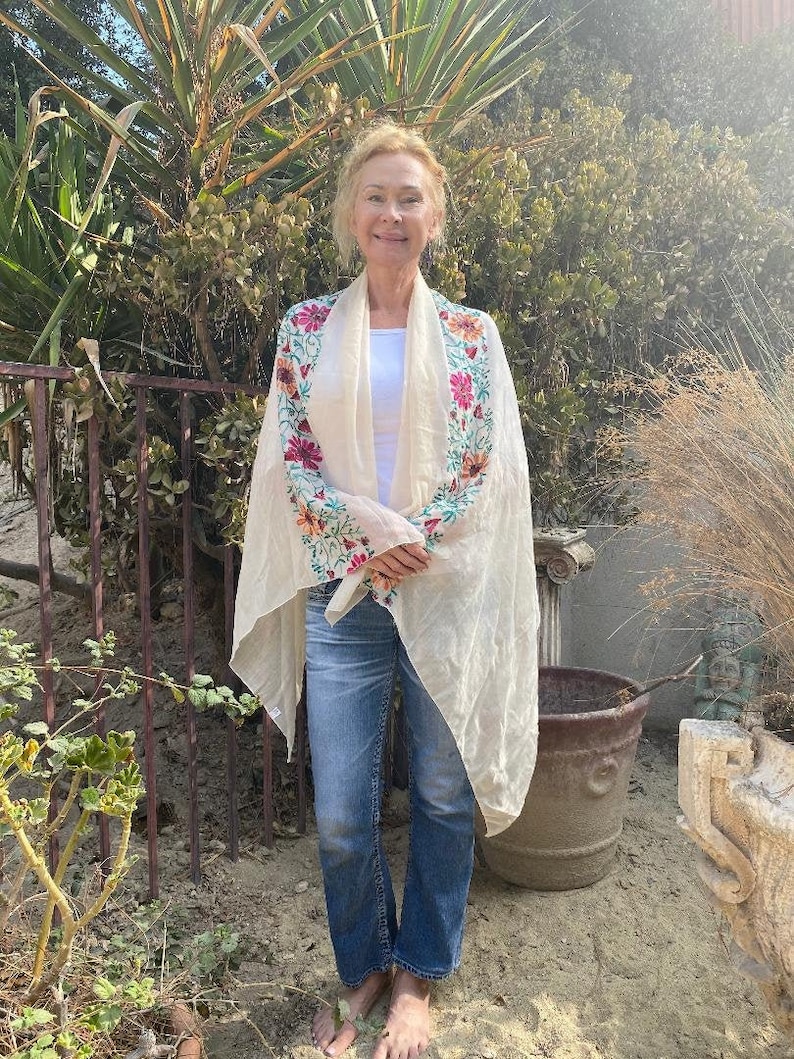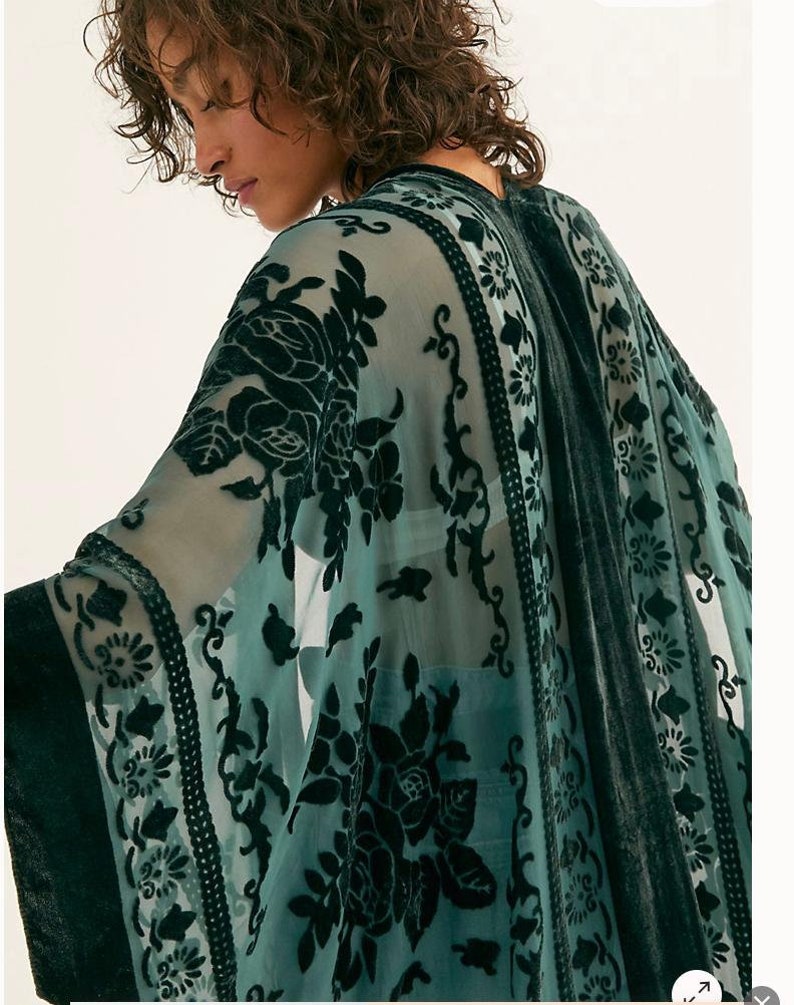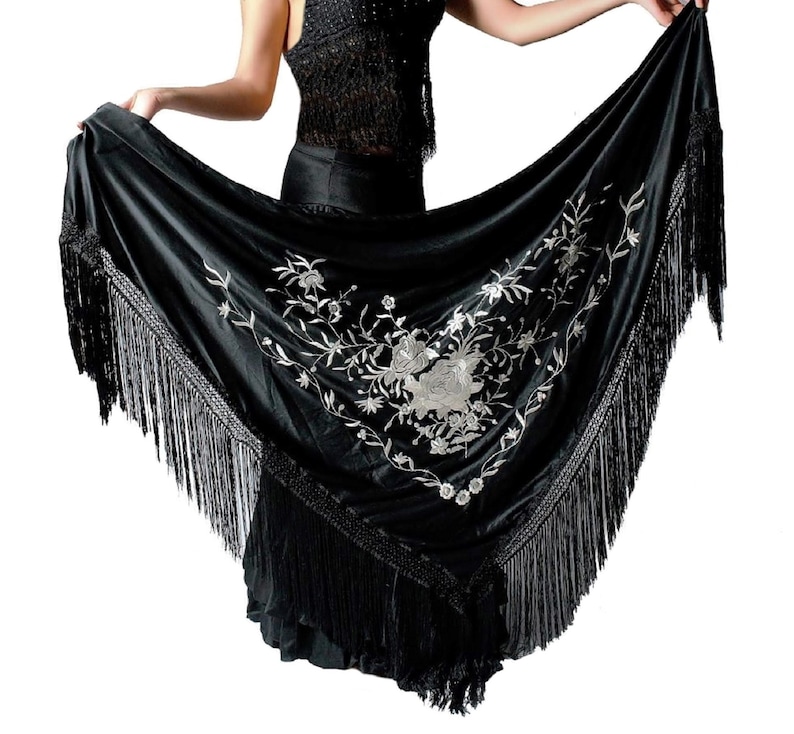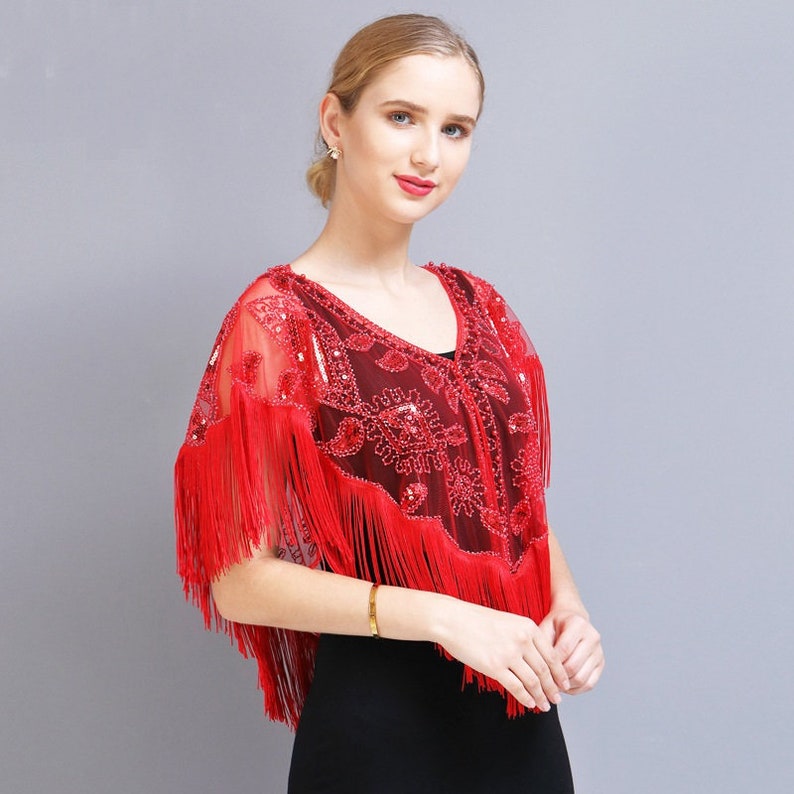
1920s shawl wraps furs scarves scarf coat cape boa
As we head into fall and winter, short-sleeved 1920s dresses may not be warm enough for a winter party. That and not all women like to expose bare arms any time of year! The solution in the 1920s is similar to today – wear a light coat, shawl, wrap, or large scarf to cover up a flapper dress or evening gown.
The 1920s, especially for evening wear, are well known for elaborate beaded, fringe, hand-painted scarves, opera coats and evening shawls inspired by the styles of the Orient and Egyptian costume. Other styles like neck scarves, fur wraps, and feather boas are also lovely accessories.
Let us review the types of 1920s evening accessories:
1920s Evening Coats, Capes
In the first half of the decade, wealthy women would purchase an evening coat, also called an opera coat, to wear over their elegant gowns. These were heavily inspired by designer Paul Poiret who studied textiles from the Far East. He developed the cocoon-shaped Opera coat with oversized dolman, batwing and kimono sleeves and a mid-length. The large coat wrapped to the center or overlapped to one side with a giant roll collar of fur or velvet fabric. The cape coat was the most popular style, without sleeves, and a large collar.
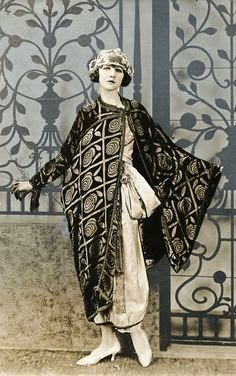
Amazing opera coat with big kimono sleeves
The body of these coats and capes could be made of gold or silver brocade, handpainted silk, satin, lamé, and velvet, which was the most affordable for the middle classes too. Opera coats could be minimally or heavily decorated with metallic embroidery, braids, and tassels.
- 1921 oper coat with fur collar
- 1924 evening wrap
- 1923 blue velvet opera coat
- 1923 fur trim opera coat
- 1921 fur velvet cape coat
- Paul Poiret “Amphitrite” Cape 1926
Many winter coats featured large fur collars and a band of fur along the hemline. Most coats were made to match or coordinate with the designer evening gown, but could also be sold separately in generic colors: black, sapphire blue, jade green, ivory, gold and raspberry red.
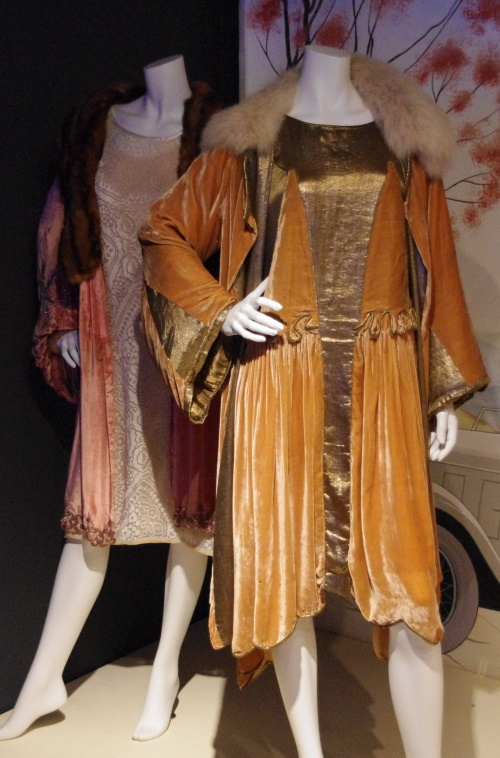
Pink and gold velvet coats with fur
These photos were taken by a reader who attended the London Fashion and Textile Museum 1920s exhibit in 2017. Aren’t they stunning!
- Early 20s cape coats
- Pink velvet cape coat
- Brocade cape coat
- Velvet coats
- Gold satin embroidered coat with fur collars and cuffs
- Gold lame embroidered wrap coat with fur collar
After 1925, the opera coat changed with the times and became a shorter evening jacket that had narrower sleeves and a fitted shape. The dramatic fur collars and cuffs remained, much like daytime coats.
There were also lighter spring coats of satin that fit like a jacket and sheer chiffon shawls in the late 1920s. In 1928, McCall’s noted, “bustle, bows, swinging panels, and fluttering flounces, depend from snug hiplines. Little evening jackets of lamé, capes with closely fitted shoulders and velvet coats with huge fur collars are designed to add brilliance to the formal season. “
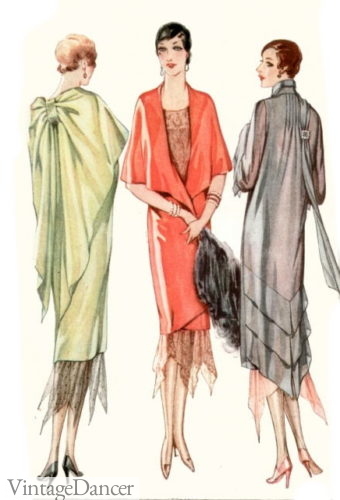
1928 sheer evening jackets
1920s Evening Shawl
Throughout the twenties, shawls were preferred over heavy coats. Spanish-style silk or rayon crepe shawls with long macrame fringe featured painted or embroidered flowers. The giant squares touched the ankle in the back. When not being worn they were draped over the home grand piano and thus were renamed “piano shawls.”
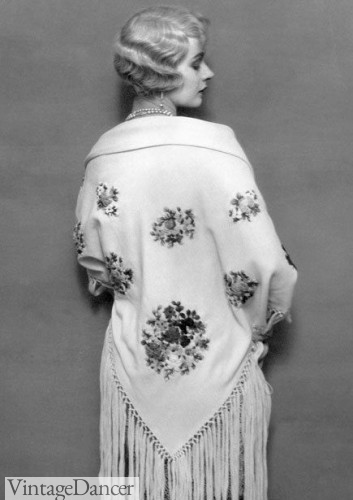
1924 Evening Shawl with Fringe and Embroidery
Popular colors were white, pink, peach, jade green, red and orange or black. They were so beautiful that they needed to be paired with a plain dress to stand out. Jeanne Lanvin paired them with the Robes de Style gowns in contrasting colors.
Many women wore piano shawls during the day and at home, too. The scarf could be made with kimono sleeves, turning it into a scarf-coat. These were light, elegant, and warm enough for spring (winter knit shawls were also sold for daywear).
- 1922 Anita Berber wears a fringe piano shawl
- Henny Porten wears a piano shawl , 1922
- 1925 fringe shawl and party dresses
- Fringe shawl worn in Miss Fisher Murder Mysteries
- 1925 fringe Spanish shawl
- 1927 Spanish shawl
The Egyptian Assuit shawl made of exotic linen net, usually white, and decorated with tiny pieces of shiny metal in motifs was a fancier shawl. The 1920s versions were designed in geometric patterns inspired by the Art Deco movement. They did not feature fringed ends.
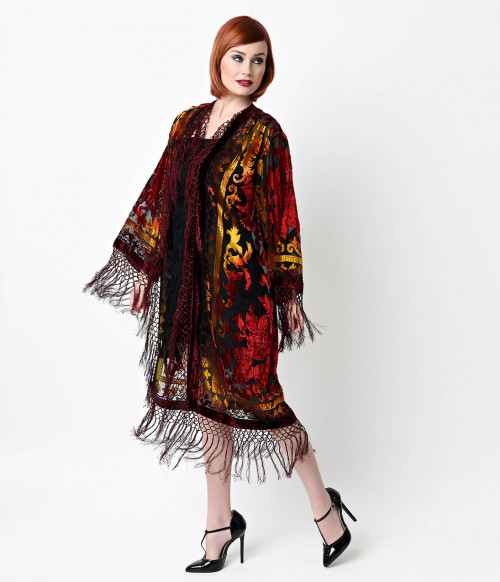
Kimono robes, aka scarf coats, are easy to find online now. LOVE this look.
The current Boho Chic trend has introduced the “Kimono coat” or shawl to the mass market, which is a sheer jacket with long fringe hanging from the sleeves and hem. They are very “twenties” and go very well with 1920s evening gowns.
Another option, if you want to make your own shawl, is to buy Indian Sari fabric. Many Sari fabrics have beading and sequins or elegant printed designs reminiscent of the 1920s.
Be careful about mixing a heavily sequined or beaded shawl with a sequin/beaded dress. They tend to snag on each other (trust me, I learned the hard way). A plain, smooth dress is best matched with a beaded/sequin/fringe shawl or kimono coat and vice versa.
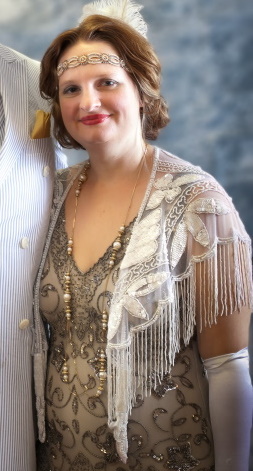
A beaded dress with a beaded shawl is prone to snagging
A smaller neck scarf was another accessory that dressed up evening gowns. Long sheer or silk scarves may have been sold as a matching set with a dress. Other times, women re-used their daytime scarves to jazz up an evening gown. Scarves of lace, satin, silk, and fringe tips were light and airy. They could be tied around the neck, around the hair, or across the arms. Learn about scarves worn for daytime in the spring or winter. These same ideas could be used in the evenings, too.
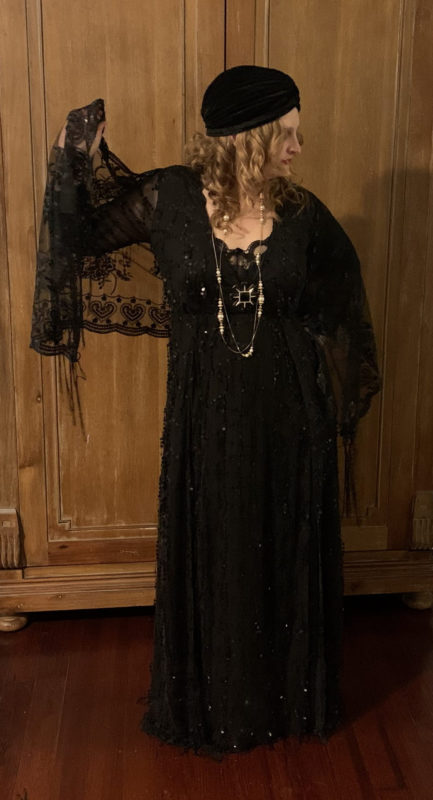
A black sheer lace and sequin scarf was he perfect accessory for this early 20s outfit
Fur Stoles
A fur stole, fur wrap, fur shawl, and fur collar were frequently added to daytime and evening outfits as a luxurious accessory. Fox fur stoles looked the most expensive, especially with the full head, feet, and body. Rectangular fur pieces were more affordable and easier to coordinate with the color of the dress. Shades of brown, black, white and grey complicated any evening gown. Furs could be worn in several ways:
- Draped around the shoulders. The Fox head “bit” one foot. A plain fur scarf may have snapped, hooked or buttoned, end to end.
- Over one shoulder, usually the right side.
- Draped over one forearm and carried about.
- Around the neck, like a collar or scarf.
- Fox fur stole held
- Fox fur stole (pieced to make it long)
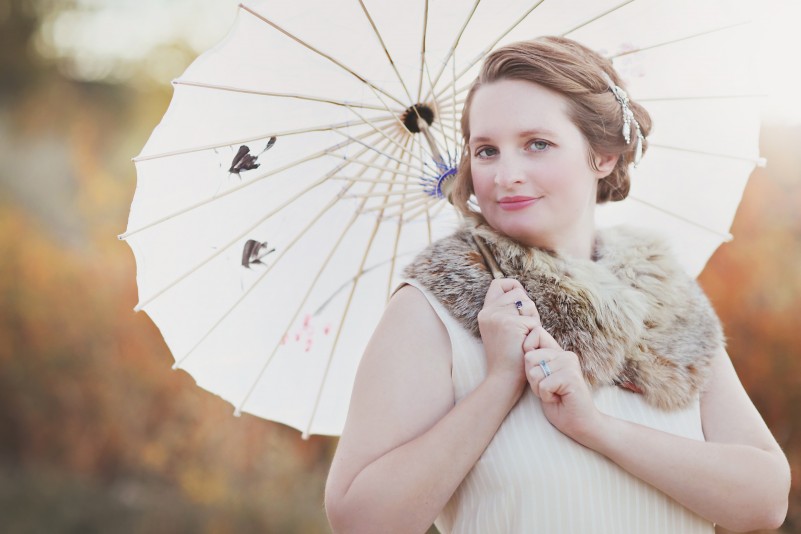
A fur collar for a fall 1920s photo session
There are plenty of faux furs accessories you can buy today. I am ok with using vintage fur pieces as well (given to me, not purchased).
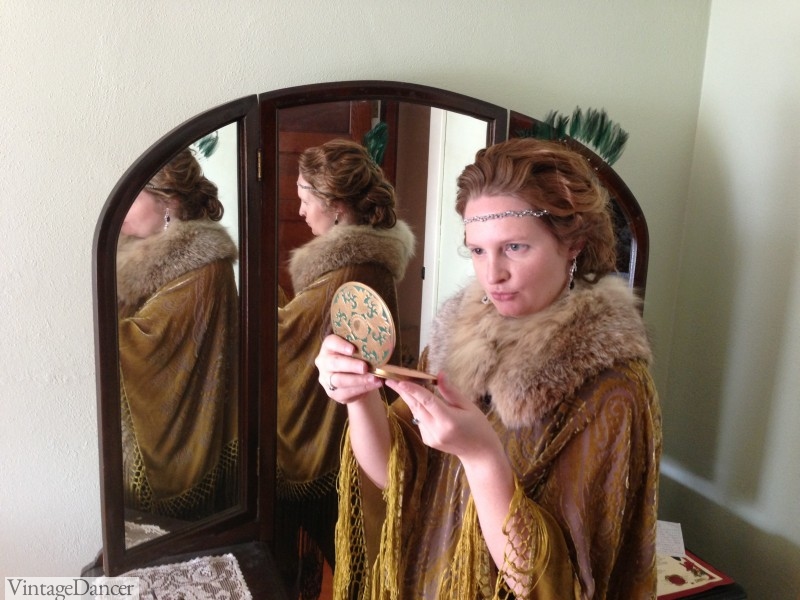
Checking makeup in my 1920s style fringe shawl and fur collar
The Feather Boa
Similar to the fur stole is the feather boa, called a ruff. It was a carry-over design from the 1910s that went in and out of fashion in the 1920s. It was a purely ornamental accessory, having little value for warmth. It was worn draped around the neck and shoulders in neutral or cheerful colors: black, white, black and white mix, navy blue, gray, brown, rose orchid, medium blue, medium green. 9-inch tassel tips were popular in the early 20s worn untied while a ribbon was tied in front during the later years. They were made of straight or curled ostrich feathers in 22-24 inch lengths.
Tip: If you want to curl a feather boa (must be real feathers) use a 1/4 curling iron on very low heat.
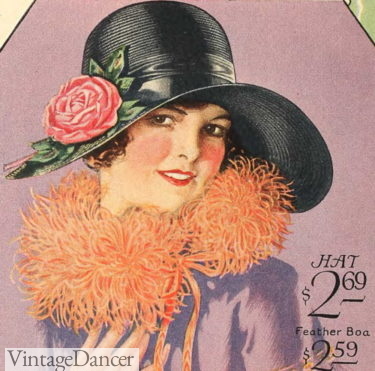
1927 boa collar
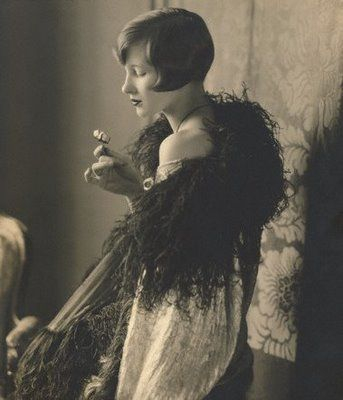
Feather boa shawl
Some movie stars were seen with very long feather boas, used as an accessory or flirtatious tickle by naughty showgirls. Notice the marabou feathers were quite long and full, unlike most costume boas available today.
- As seen in Miss Fisher series
- Long boa, mid 20s
